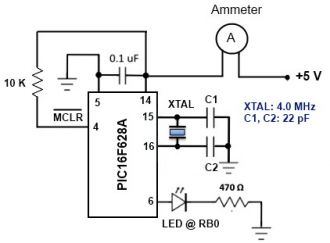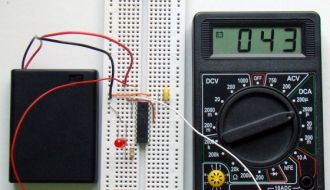
We strongly encourage users to use Package manager for sharing their code on Libstock website, because it boosts your efficiency and leaves the end user with no room for error. [more info]

Rating:
Author: Rajendra Bhatt
Last Updated: 2011-10-11
Package Version: 1.0.0.0
Category: Other Codes
Downloaded: 2832 times
Followed by: 1 user
License: MIT license
This is actually an experimental tutorial that shows how to put a PIC microcontroller into Sleep mode to lower the power consumption in battery-powered applications. I used PIC16F628A and MikroC Pro for PIC for illustration.
Do you want to subscribe in order to receive notifications regarding "Learn how to put a PIC microcontroller to sleep" changes.
Do you want to unsubscribe in order to stop receiving notifications regarding "Learn how to put a PIC microcontroller to sleep" changes.
Do you want to report abuse regarding "Learn how to put a PIC microcontroller to sleep".
| DOWNLOAD LINK | RELATED COMPILER | CONTAINS |
|---|---|---|
| 1318291375_learn_how_to_put_mikroc_pic.zip [279.94KB] | mikroC PRO for PIC |
|
The Sleep feature of PIC microcontrollers is an extremely useful mechanism to minimize power consumption in battery-powered applications. In Sleep mode, the power consumption is lowest. The device can be woken up by an external reset, a watch-dog timer reset, an interrupt on INT0 pin, or port-on-change interrupt. This project describes how to put a PIC microcontroller into Sleep mode and then compares the current consumption during Sleep mode and the normal operation mode.

An ammeter is connected in series to monitor the current drawn from the source.
View full image